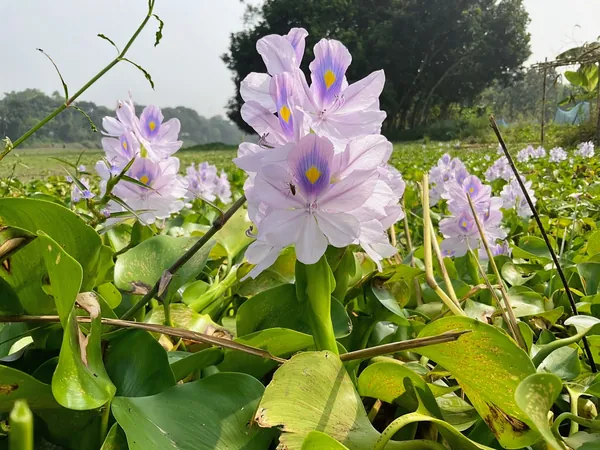
Invasive Plants: The Unseen Revolution Reshaping the Tropics
2025-09-16
Author: Li
The Wave of Change in the Tropics
Plants are on the move, and in the tropics, this disruption is monumental. Alien species, once confined to their native lands, are now thriving in the tropics, transforming ecosystems and challenging local communities.
The Invasive Takeover
Around 10,000 alien plant species have established themselves in the greater tropics, many introduced for agriculture, gardening, or medicinal purposes. While most of these newcomers may be harmless, a specific few have become notorious for wreaking havoc on local environments.
A Tale of Lantana Camara
One of the most aggressive invasive species is Lantana camara, native to tropical Americas but spread to Europe in the 1600s and later to colonies like India. This beautiful garden plant has morphed into a menace, consuming vast swaths of land and forcing traditional communities, like the Soliga people in India, to abandon their ancestral ways of life and seek alternatives.
The Expansive Reach of Lantana
Lantana has infested a staggering 74 million acres in India, over nine million acres in Australia, and nearly 400,000 acres in Hawaii. Its invasive nature is not merely displacing native plants but also disrupting local ecosystems, reducing food sources for herbivores and indirectly impacting predators like tigers.
A Ripple Effect on Humans
The invasive plant crisis has severe implications for communities reliant on forests for sustenance and resources. As ecosystems weaken, competition for food escalates, leading to conflicts between wildlife and humans.
Colonial History and Modern Impacts
The introduction of invasive species isn’t a new phenomenon—humans have altered landscapes throughout history. However, colonial-era practices accelerated the spread of these plants, which have only intensified with globalization post-World War II.
Nature Under Siege
Human activities, including deforestation and pollution, have undermined natural ecological balances, paving the way for invasive species to flourish. As climate change exacerbates conditions, the balance of these ecosystems hangs by a thread.
The Dual Nature of Invasive Species
Interestingly, not all alien plants are malicious. Some can provide ecological benefits, particularly in stressed environments. Research suggests that these 'neutral' species may offer stability in a changing climate, prompting new ecosystems to form.
Costly Battles Ahead
Addressing the issue of invasive plants is costly, and their complete eradication remains a distant dream. Dismissing them outright could lead to further ecological harm. Creative management strategies, such as reintroducing large herbivores, might provide a sustainable solution.
Living with Invaders
In various tropical regions, communities have started adapting to their new botanical inhabitants by utilizing invasive species. Crafts, furniture, and biochar production leverage these plants, forming new methods of coexistence.
The New Normal
Invasive species are altering landscapes and lifestyles. As they reshape our world, the pressing question is not merely about eradication but rather about coexistence and smart management for the future of our ecosystems.

 Brasil (PT)
Brasil (PT)
 Canada (EN)
Canada (EN)
 Chile (ES)
Chile (ES)
 Česko (CS)
Česko (CS)
 대한민국 (KO)
대한민국 (KO)
 España (ES)
España (ES)
 France (FR)
France (FR)
 Hong Kong (EN)
Hong Kong (EN)
 Italia (IT)
Italia (IT)
 日本 (JA)
日本 (JA)
 Magyarország (HU)
Magyarország (HU)
 Norge (NO)
Norge (NO)
 Polska (PL)
Polska (PL)
 Schweiz (DE)
Schweiz (DE)
 Singapore (EN)
Singapore (EN)
 Sverige (SV)
Sverige (SV)
 Suomi (FI)
Suomi (FI)
 Türkiye (TR)
Türkiye (TR)
 الإمارات العربية المتحدة (AR)
الإمارات العربية المتحدة (AR)